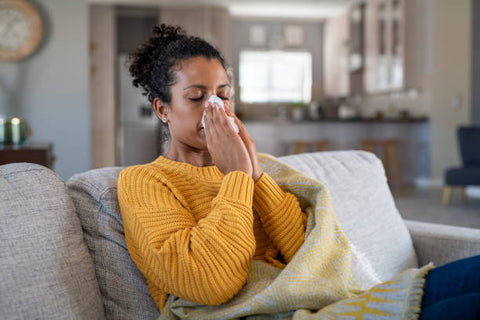Ah, the joy of springtime blooms and fresh-cut grass – unless you're one of the millions who suffer from allergies. For those who contend with sneezing, itchy eyes, and runny noses, antihistamines are the superheroes that come to the rescue. In this comprehensive guide, we'll dive deep into the world of antihistamines, unraveling their mysteries, exploring how they work, and providing insights into their various types and uses.
The Allergy Battle: Understanding Histamines
Before we meet the heroes, let's understand the villains: histamines. These troublemakers are chemicals released by your immune system when it encounters an allergen. Histamines cause the sneezing, itching, and other bothersome symptoms of allergies.
Enter Antihistamines: The Superheroes of Allergy Relief
Antihistamines are your body's allies in the fight against histamines. They work by blocking the action of histamines, effectively reducing or preventing allergy symptoms.
Types of Antihistamines
1. First-Generation Antihistamines: These include medications like diphenhydramine (Benadryl) and chlorpheniramine (Chlor-Trimeton). While effective, they are known for causing drowsiness and are often best used at night.2. Second-Generation Antihistamines: Modern heroes like cetirizine (Zyrtec), loratadine (Claritin), and fexofenadine (Allegra) are second-generation antihistamines. They offer allergy relief without the drowsiness associated with their predecessors.
3. Prescription Antihistamines: In severe cases, healthcare providers may prescribe stronger antihistamines or combination medications to manage stubborn allergies.
Common Uses of Antihistamines
1. Seasonal Allergies: Our first hero, second-generation antihistamines, are excellent for combating seasonal allergies like hay fever. They keep sneezing, itching, and congestion at bay, allowing you to enjoy the outdoors.
2. Allergic Reactions: When faced with allergens like bee stings or certain foods, antihistamines can help reduce the severity of allergic reactions.
3. Skin Allergies: Topical antihistamines in the form of creams or gels are available for skin allergies, offering relief from itching and irritation.
Using Antihistamines Safely and Effectively
When it comes to harnessing the power of antihistamines for allergy relief, responsible usage is key. Here's your comprehensive guide to using antihistamines safely and effectively:
1. Dosage of Antihistamines: Always follow the recommended dosage instructions found on the packaging of your chosen antihistamine product. Alternatively, if your healthcare provider has prescribed a specific antihistamine for your condition, adhere to their instructions meticulously. Correct dosage ensures you receive the desired relief without risking side effects or insufficient effectiveness.2. Side Effects of Antihistamines: While antihistamines are effective allies against allergies, some may come with side effects. First-generation antihistamines, in particular, are known for causing drowsiness, which can impact your ability to concentrate and stay alert. Certainly, here are the potential side effects of antihistamines:
- Drowsiness, particularly with first-generation antihistamines
- Dry mouth
- Dizziness
- Impaired coordination
- Nausea or stomach upset (less common)
- Headache (less common)
- Blurred vision (less common)
Conclusion: The Heroic Allergy Fighters
Histamines may try to ruin your day, but antihistamines are the superheroes ready to save it. Whether you're facing seasonal allergies, allergic reactions, or skin irritations, antihistamines are your trusted allies in the battle against histamines. When used responsibly and with knowledge, they allow you to conquer allergies and enjoy life without the sneezing and itching. So, go ahead, embrace the great outdoors – your antihistamine heroes have got your back.
Author: Nikita Vishnoi BCA















